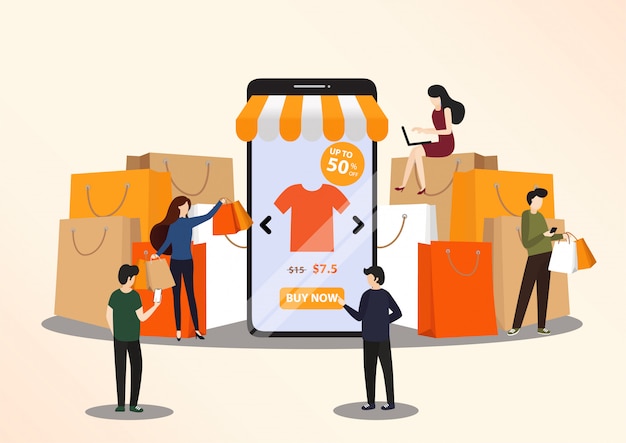Why Gen Z Prefers Experiential Shopping & How Retailers Can Adapt
Born between the mid-1990s and early 2010s, Gen Z has grown up with smartphones in their pockets, social media at their fingertips, and a world of information just one Google search away. These digital natives are markedly different from previous generations—not just in how they shop, but why they shop.
Gen Z consumers prioritize authenticity, personalization, and social responsibility. They’re skeptical of overly polished marketing and expect brands to have a clear stance on issues that matter—from sustainability to inclusivity. But perhaps their most distinct trait? A preference for experiences over possessions. According to NielsenIQ, this generation doesn't just want to buy products; they want to be emotionally engaged, entertained, and involved in something bigger than the transaction.
Despite being younger and still coming into their full earning potential, Gen Z already exerts a powerful influence over retail trends. They’re shaping not only what sells but how it sells. For brands and retailers, the message is clear: if you want to scale your business, you need to start thinking like a Gen Zer.
The Rise of Experiential Shopping
Experiential shopping moves beyond traditional, transactional retail. It creates an immersive, engaging, and memorable environment that taps into emotion, entertainment, and storytelling. From pop-up installations to in-store events and interactive displays, retailers are reimagining the brick-and-mortar space as a stage for experience-driven commerce.
Why? Because Gen Z craves discovery. A visit to the store isn’t just about picking up a product—it’s a social outing, a creative exploration, and often, an opportunity to share something visually striking on social media.
Retailers like Glossier and IKEA have leaned into this trend by designing their stores as experience-first spaces. Temporary installations, themed zones, and even live events are used to create a buzz. For Gen Z, the opportunity to touch, feel, and play with products adds a level of authenticity that static online images can’t replicate.

Deliver immersive retail experiences Gen Z craves with Ginesys' unified POS and omnichannel platform.
Why Digital-Savviness Alone Isn’t Enough
While Gen Z may be connected to their phones, that doesn’t mean digital-only strategies will win them over. In fact, digital and physical must work in tandem. E-commerce offers convenience, but it lacks the sensory and emotional engagement many Gen Zers crave.
This generation often researches products online—looking at reviews, comparing prices, and watching influencer unboxings—before heading in-store to finalize their purchase. They expect retailers to provide a seamless blend of digital efficiency and physical immersion.
It’s no surprise then that several once-digital-only brands like Warby Parker and Allbirds have opened physical locations. These spaces allow customers to interact with the brand in new ways while reinforcing the trust built online. Gen Z may live online, but when it comes to buying, they’re still driven by real-world experiences.
Tech-Infused Shopping Experiences
If you want to impress Gen Z in-store, you need to speak their language—and that language is technology.
Think smart mirrors that let customers try on clothes virtually, QR codes that pull up product stories and how-tos, or gamified AR treasure hunts that turn shopping into a social activity. These digital overlays create a hybrid experience that aligns perfectly with Gen Z’s mobile-first mindset.
AI and machine learning can also personalize the journey—offering tailored recommendations based on browsing history or purchase behavior. Loyalty programs that integrate with mobile apps and offer instant rewards, location-based deals, or exclusive events-invites turn a basic retail visit into an interactive journey.
When tech enhances convenience and creativity—not just functionality—it becomes a differentiator for this audience.

Bridge online and offline shopping journeys with Ginesys' seamless omnichannel retail solutions.
Community, Culture & Connection
More than any generation before them, Gen Z wants to feel a sense of belonging. They gravitate toward brands that reflect their values and foster meaningful connections—not just transactions.
Retailers can tap into this by offering community-centric spaces—think DIY workshops, local artist showcases, or pop-ups supporting social causes. These experiences are more than promotional—they create emotional resonance.
Inclusivity, representation, and cultural relevance matter deeply. For Gen Z, brand loyalty isn’t built on price alone, but on how a brand shows up in the world. Transparent supply chains, diversity in marketing, and ethical sourcing aren’t just nice-to-have's—they’re prerequisites.
Storytelling is key. Whether through interactive in-store installations or branded content, the ability to tell a compelling, value-driven story is what transforms customers into brand advocates.
The Role of Social Media in Shaping Expectations
Platforms like TikTok, Instagram, and YouTube don’t just inspire purchases; they actively shape how retail spaces are designed. Gen Z seeks “Instagrammable” environments that are share-worthy and visually stimulating. According to NudgeNow, a visually creative, photogenic in-store experience can have a bigger ROI than a billboard.
But it’s not just aesthetics. Gen Z turns to their peers, influencers, and micro-creators for reviews, tutorials, and first impressions. They trust user-generated content more than branded campaigns, and they use social media to validate or veto buying decisions in real time.
For retailers, this means your social strategy must be as experiential as your physical store.u What’s happening in-store should be seen online—and vice versa.

Personalization is the New Loyalty
Forget cookie-cutter offers and generic loyalty programs. Gen Z expects retailers to treat them as individuals, not customer segments.
This means personalized product recommendations, tailored email content, and real-time, preference-based promotions. Data collection must be transparent and value-driven—Gen Z is savvy about privacy and expects opt-in experiences that respect their digital rights.
Loyalty programs should go beyond points. Think early access to drops, curated experiences, or private community events. These create a sense of exclusivity and belonging that resonates deeply with Gen Z.
Blurring the Lines: Phygital Retail
The term “phygital” captures the essence of what Gen Z wants—a frictionless blend of physical and digital touchpoints. This has become the new retail baseline.
Features like click-and-collect, endless aisle (where customers can order out-of-stock items in-store), mobile payments, and in-store kiosks make the buying journey convenient. But when wrapped in an engaging environment, they also satisfy the desire for experiential interaction.
Consistency is critical. Gen Z expects the same tone, pricing, and personalization across channels. Whether they’re engaging with your brand via a mobile app or an in-store associate, the experience should feel cohesive and connected.

Level up your in-store engagement with fast, mobile POS for pop-ups and flagship stores.
From Salespeople to Brand Storytellers
Retail associates have evolved beyond product pushers to experience facilitators. To win Gen Z’s trust, staff must be trained to deliver authentic, informative, and personalized interactions. This could mean having deep product knowledge, being able to demonstrate app features, or simply being good listeners.
Equipping them with tablets, real-time inventory tools, and CRM access turns every interaction into a data-informed, human moment. According to NielsenIQ, even digital-savvy Gen Zers value face-to-face connection—as long as it’s meaningful.
Additionally, micro-experiences, like a spontaneous product demo or a genuine compliment, can go viral—and build real brand affinity.
Powering Experiential Commerce with Ginesys
Creating smooth, scalable, and smart phygital experiences requires powerful backend tech. As a complete omnichannel retail solution, Ginesys connects everything from online marketplaces and e-commerce platforms to in-store POS systems and backend operations.
- Its powerful cloud-based POS offers fast, mobile-enabled billing, digital payments, and promotions—ideal for dynamic in-store engagement and brand storytelling.
- With centralized inventory management and real-time data sync, retailers can ensure availability across channels, enabling features like endless aisle, click-and-collect, and flexible fulfillment.
- The platform also integrates with leading CRM, ERP, and loyalty systems, making it easy to deliver personalized offers, track customer behavior, and reward Gen Z shoppers with curated experiences.
- Ginesys GO, the mobile POS and app, supports pop-up stores and events, while its business intelligence tools give retailers actionable insights to continuously optimize performance.
From flagship stores to temporary retail spaces, Ginesys equips brands with the tools to thrive in the phygital era—where agility, personalization, and experience take center stage.

Stay ahead of Gen Z trends by transforming your stores into share-worthy, tech-powered destinations.
Experience is the Product
For Gen Z, a great product isn’t enough. They want a great story, a great interaction, and a great memory. This generation is not passive; they prefer to co-create the brand journey.
Retailers must rethink their offering: experience is no longer a value-add—it is the value. From interactive spaces to hyper-personalized service, the future of retail hinges on emotional connection, digital fluency, and authentic engagement. Brands that meet Gen Z where they are, both digitally and emotionally, will be the ones that thrive in this next era of commerce.
How can your retail brand evolve? Start by asking: Are we offering something worth feeling, sharing, and remembering?
Book a demo to explore how Ginesys can help you create immersive, omnichannel journeys that convert.

